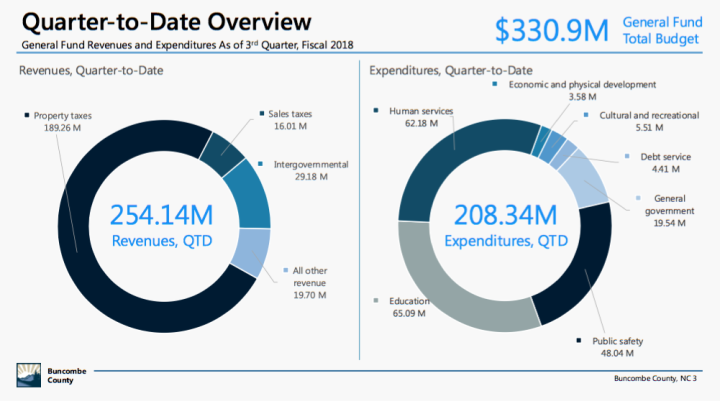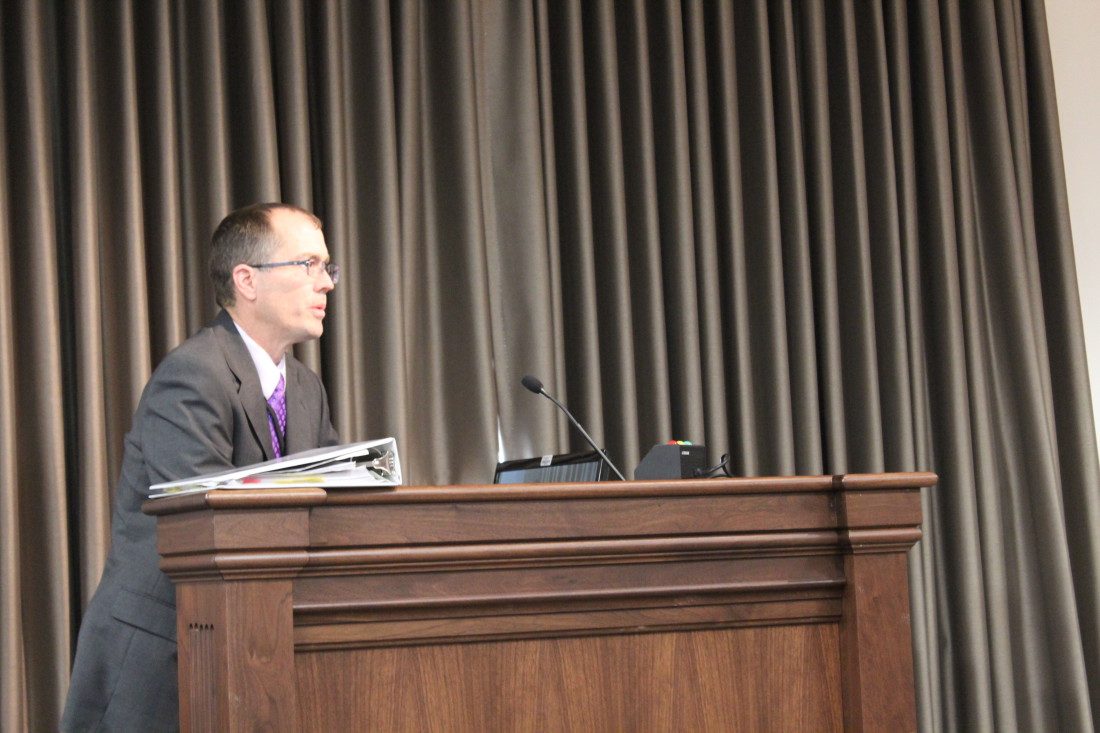Members of the Buncombe County Board of Adjustment will now receive another piece of paper as they consider some residential development projects.
The county Board of Commissioners on May 1 unanimously passed an amendment to the county’s zoning ordinance to require developers of projects with more than 75 residential units to submit a traffic study to the Board of Adjustment along with the permit application.
Planning Director Nathan Pennington said county staff developed the amendment after noticing that the Board of Adjustment, which approves conditional use permits, had developed a habit of delaying its decisions on large residential projects to allow more time for the completion of a traffic study.
“This document can provide additional tools in helping our volunteer Board of Adjustment make informed decisions in an often contentious environment,” Pennington told commissioners.
This contentiousness was on display during a Board of Adjustment meeting in December, when county residents showed up in force to protest the proposed construction of a 296-unit apartment complex off Aiken Road. The board ultimately approved the project after requesting a traffic study from the developer.
The ordinance doesn’t specify what information needs to be included in the traffic study, but the study must be conducted by a traffic engineer licensed in North Carolina.
How low can you go?
The commissioners reached their decision after toying with the idea of sending the measure back to staff, noting that the 75-unit threshold initially seemed too low. Commissioner Al Whitesides said he was concerned that the cost of completing a traffic study would be passed on to residents.
“If we start talking about affordable housing, this could have an effect,” he said.
Pennington said staff settled on the 75-unit threshold after reviewing past applications with an eye to the number of units that seemed to generate comments from the community.
“We don’t want to go obviously too low because that could impact some of our smaller developments that could be more affordable,” Pennington said. Many developers, he said, do already include a traffic study in their application.
Carter Webb, the president of the Oak Forest Property Owners Association, urged commissioners to approve the requirement, citing a proposal last year to construct a large residential development off Overlook Road. The developer had originally planned to put a 221-apartment, 30-townhome development on the property but pivoted to a 98-home subdivision after receiving blowback from the community.
“If you’ve driven down Overlook Road, it’s pretty packed, it’s pretty crowded,” he said. “Even with 90 homes, it was still going to be an issue.” The subdivision was slated to go in front of the Planning Board in September but was ultimately withdrawn.
Subdivisions play by different rules
This amendment doesn’t change the requirements for subdivision applications, which are approved by the Planning Board rather than the Board of Adjustment. Rules require a traffic study for subdivisions with 300 or more lots. Pennington said a separate amendment would have to be submitted to change the number of lots that triggers the traffic study requirement for subdivisions. “Staff will take time to study this and will likely have a discussion with the Planning Board later this summer,” he told Xpress.
The 75-unit threshold passed by the board of commissioners is more rigorous than the N.C. Department of Transportation requirement for traffic studies, which requires one for residential developments with more than 300 units. The city of Asheville requires a traffic study for all new developments that would result in 100 or more vehicle trips during peak hours of the day, according the city’s code of ordinances.
Webb said a drunk driver going 60 miles per hour in a 25 mile-per-hour zone slammed into a tree near his house and flipped in October. “Thankfully, nobody was there,” he said.
Commissioner Ellen Frost said she supported the amendment as proposed and noted that traffic tends to be one of the most prominent concerns she hears from the community.
“This isn’t just a number,” she said. “This is people’s lives.”
In other business
In light of the investigation into former county manager Wanda Greene and her subsequent indictment on federal charges for fraud and embezzlement, the county board has asked for more frequent updates on the county’s financial status as part of efforts to tighten elected leaders’ oversight of county spending. Staff reported on May 1 that, of the $331 million amended budget for fiscal year 2018, the county had brought in about $254 million as of March 31. Most of that is in property tax revenue.
The county has $459 million of outstanding debt. Almost 59 percent (about $270 million) of the county’s debt is related to spending on education facilities, which is paid for through sales tax revenue. The county will make a $36 million debt service payment on June 1. About $26 million will go toward the principal of that debt, while the rest will pay off interest.
In accordance with its debt policy, the county must pay off 55 percent of its debt within 10 years. County Finance Director Tim Flora told commissioners the county is on track to pay off 63 percent of its debt within that timeframe.

Commissioners also heard a presentation from Lew Bleiweis, the executive director of the Asheville Regional Airport.
In 2017, the airport saw a 15.7 percent increase in passengers, reaching a total of 956,634. Bleiweis said the airport expects that figure to reach one million in 2018.
Bleiweis also reported that the airport’s operating revenue in the last fiscal year was $10.7 million. Operating expenses were $8.4 million, with about $2.3 million going back into capital projects.
The next Board of Commissioners meeting will take place at 5 p.m. on Tuesday, May 15, in room 326 at the county building at 200 College St. in downtown Asheville.
The board will also hold a budget workshop at 12:30 p.m. on Tuesday, May 8, in the first floor conference room at 200 College St.




Wow, a county bureaucrat is of the belief that layering on requirements to build housing could have cost implications and they could be passed on to residents. Where else might they be passed?
A wider group of residents already pay the cost of building housing under the current arrangement. When a developer builds a 296-unit apartment complex off a quiet road, the construction trucks trundling back and forth every day on the project drastically accelerate the need for repairs.
Developers stepped around the previous rules for developments in the county by proposing plans on random parcels that fell just under the 300-unit threshold. The question will be whether they have plans that would fit under the 75-unit threshold. If a bunch of proposals show up for 70 units on 7 acres, we’ll know.
We already know that a majority of the people renting or buying will drive cars which in turn will have a negative impact on our community. There is no need for a traffic study to show this increase. To fix the problem we need to tie housing development with transit development ensuring people have an alternative to driving. Every unit should have easy access to sidewalks, bike lanes and to the bus. Our City has plenty of room for more people, it’s the destructive automobile we can no longer tolerate